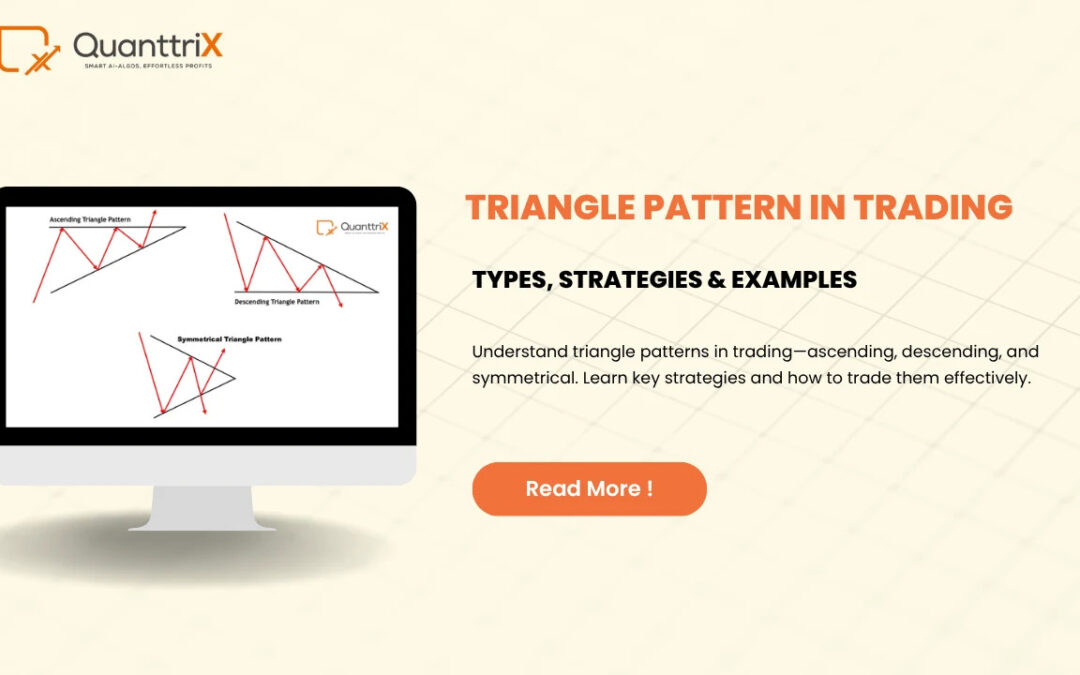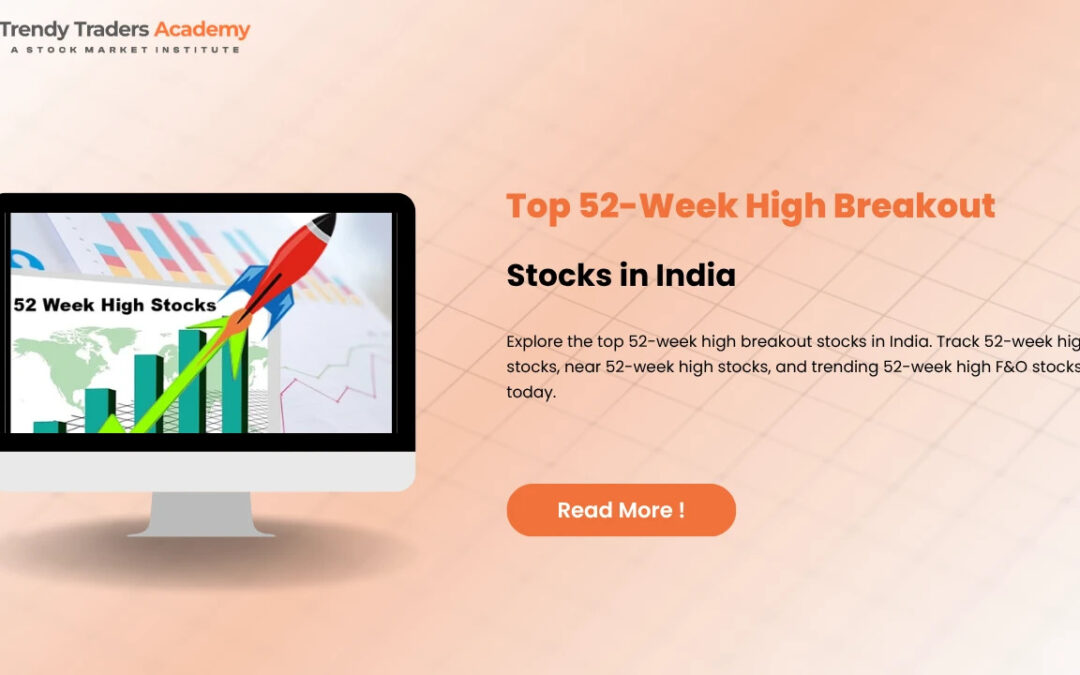
Triangle Pattern in Trading: Easy Guide for Everyone
Triangle Pattern in Trading: A Simple Guide for Smart Investing
Introduction: Making Sense of Market Shapes
Ever stared at a stock chart and wondered what those zig-zag lines meant? Imagine you’re connecting the dots on a puzzle that tells you when prices might rise or fall. That’s exactly what chart patterns do in trading—and one of the most reliable and simple ones is the triangle pattern.
This pattern is like a conversation between buyers and sellers, silently happening in front of your eyes. In this guide, we’ll break it down in plain English, focusing especially on the descending triangle pattern, which is a favorite among experienced traders and even algo trading software in India.
We’ll also peek into how these patterns work with the best algo trading software in India, helping you make decisions faster and smarter.
Learn how the descending triangle pattern helps in smart trading. Explore algo trading software India & the best algo trading software in India.
What is a Triangle Pattern in Trading?
A triangle pattern is a shape you see on a price chart when the highs and lows of a stock or any asset start to converge, forming a triangle. It’s like watching a crowd gather before a big event—tension builds up, and something dramatic is about to happen.
This pattern tells you that the market is getting ready for a move. The direction of that move depends on the type of triangle.
Types of Triangle Patterns
There are three main types:
-
Ascending Triangle – A bullish signal showing rising demand.
-
Symmetrical Triangle – A neutral setup where the direction could go either way.
-
Descending Triangle – A bearish signal that often predicts a downward breakout.
We’ll focus on the descending triangle pattern in this guide, as it’s crucial for smart decision-making, especially with the help of algo trading software in India.
What is a Descending Triangle Pattern?
The descending triangle pattern happens when prices form a flat support line at the bottom and a downward-sloping resistance line at the top.
Picture a ceiling that keeps coming down while the floor stays steady. Eventually, the pressure builds, and the floor breaks—that’s your breakout point, usually downward.
Key characteristics:
-
Lower highs
-
Constant support level
-
Decreasing volume
-
Bearish bias
Visualizing the Pattern: A Simple Analogy
Imagine blowing up a balloon inside a box. The top of the box slowly lowers while the bottom remains flat. Eventually, the balloon bursts at the bottom because pressure has nowhere else to go. That’s how a descending triangle pattern behaves.
The upper side (resistance) keeps pushing down, while the bottom (support) holds—until it doesn’t.
How Traders Use the Descending Triangle
Traders look for this pattern to predict when a price might fall. The moment it breaks below the flat support line with strong volume, it usually signals a selling opportunity.
It’s like a warning sign on the highway telling you a sharp curve is ahead—you don’t want to miss it!
Spotting a Descending Triangle on a Chart
Here’s what to look for:
-
Draw a horizontal line through at least two lows
-
Draw a descending line connecting lower highs
-
Watch the volume—it typically decreases
-
Wait for a breakout—usually downward
The more times the price touches these lines without breaking, the stronger the pattern.
Breakouts: The Moment of Truth
A breakout is when the price escapes the triangle, and it’s what traders wait for. In a descending triangle, this breakout is mostly downward.
But here’s the catch—false breakouts happen too. That’s why it’s crucial to wait for confirmation, like a high volume drop or a second candle after the breakout.
Pro Tip: Combine this pattern with volume indicators and trend confirmation to improve accuracy.
Volume and Timing: Two Keys to Success
Volume acts like the soundtrack to the chart. If it’s loud during a breakout, you know the market means business.
-
Low volume inside the triangle = building pressure
-
High volume during breakout = confirmed move
Timing matters, too. Breakouts close to the triangle’s end tend to be stronger.
Real-Life Example of Descending Triangle
Let’s say stock XYZ is trading at ₹500. Over the next few weeks:
-
It hits ₹480 multiple times but bounces back.
-
Highs go from ₹520 → ₹510 → ₹500 → ₹490
-
Eventually, it falls below ₹480 on big volume.
That’s your descending triangle breakout—and likely a sign to sell or short.
Mistakes to Avoid While Trading Triangles
Even good traders make errors. Here are some to dodge:
-
Acting too early before the breakout
-
Ignoring volume
-
Not using stop-loss orders
-
Chasing false breakouts
Always wait for confirmation and have a risk management plan.
Triangle Patterns and Algo Trading
Algo trading, or algorithmic trading, uses computers to trade based on predefined rules. Triangle patterns are perfect for algorithms because their structure is clear and repetitive.
Algorithms can scan thousands of charts per second, spot triangle patterns, and execute trades instantly—something humans can’t do as fast.
Why Algo Trading Software in India Loves Patterns
In India’s fast-growing stock market, triangle patterns work well with algo trading software due to:
-
Predictability of the pattern
-
Clear entry and exit points
-
Volume-based confirmation
-
Easy to code into software
That’s why many platforms offering algo trading software in India are designed to recognize triangle patterns.
Best Algo Trading Software in India for Triangle Patterns
Here are some top options where triangle patterns can be automated:
-
Quanttrix – Known for its accurate pattern recognition and speed.
-
Streak by Zerodha – Allows you to backtest triangle-based strategies easily.
-
AlgoTest – Suitable for technical traders focusing on breakout strategies.
-
Tradetron – User-friendly with drag-and-drop strategy builders.
Look for tools that offer:
-
Real-time chart scanning
-
Backtesting for patterns
-
Customizable breakout alerts
This is where the best algo trading software in India shines—saving time and increasing precision.
Tips for Beginner Traders
If you’re just starting out, here are some friendly tips:
-
Practice on paper trades before using real money
-
Use free charting tools like TradingView
-
Start with one pattern, like the descending triangle
-
Don’t ignore stop-loss orders
-
Try demo accounts of algo trading platforms
Learning trading is like learning to ride a bicycle—it takes balance, practice, and some skinned knees.
Final Thoughts on Using Triangle Patterns Wisely
The descending triangle pattern is a powerful signal in the world of trading. When used correctly—and preferably with algo trading software in India—it can help you spot opportunities before they pass you by.
But like any tool, it works best when combined with patience, practice, and proper planning.
Whether you’re manually scanning charts or relying on the best algo trading software in India, understanding this pattern gives you an edge. Because in trading, recognizing the shape of things to come is half the battle won.
FAQs
What does a descending triangle pattern indicate?
It usually signals a potential price drop and is considered a bearish chart pattern used to predict downward breakouts.
Can beginners use triangle patterns in trading?
Absolutely! The triangle pattern is one of the easiest to recognize, especially with a bit of practice and visual guidance.
How accurate is the descending triangle pattern?
While it’s not foolproof, it has a high success rate, especially when confirmed by volume and supported by other indicators.
What is the role of algo trading in recognizing triangle patterns?
Algo trading software can detect patterns automatically and execute trades quickly based on preset rules, removing human error and delay.
Which is the best algo trading software in India for triangle patterns?
Popular platforms include Quanttrix, Streak, and Tradetron—all offering tools to automate triangle pattern recognition and execution.

